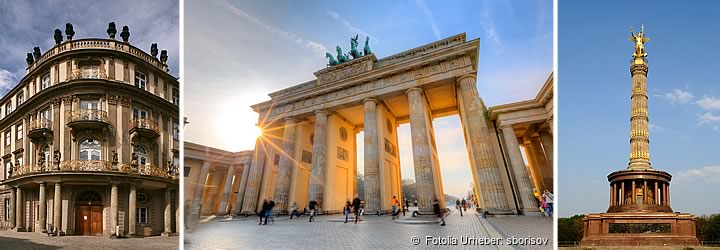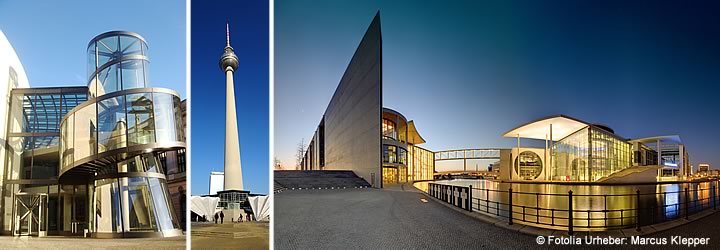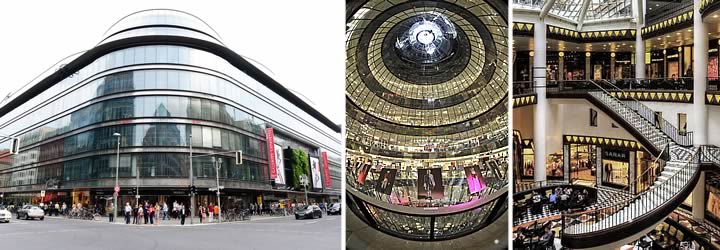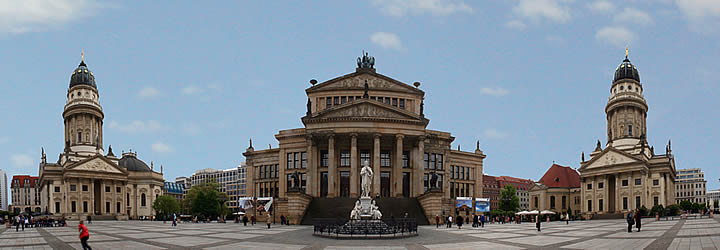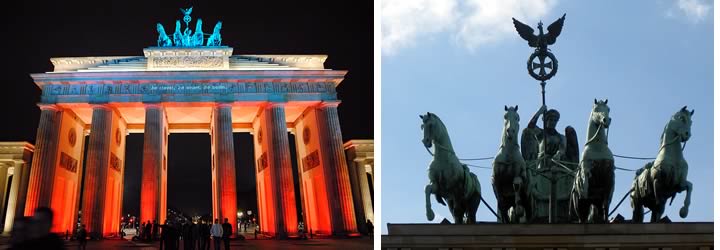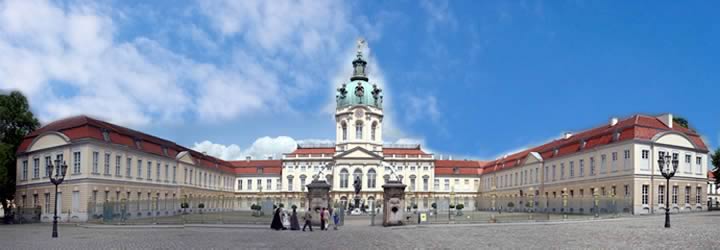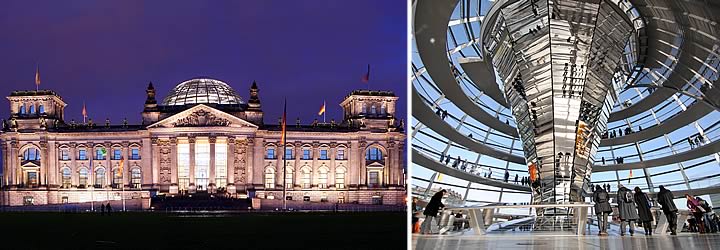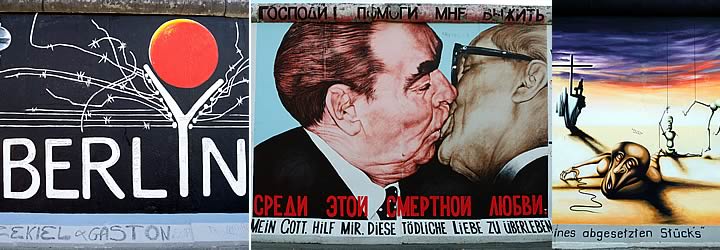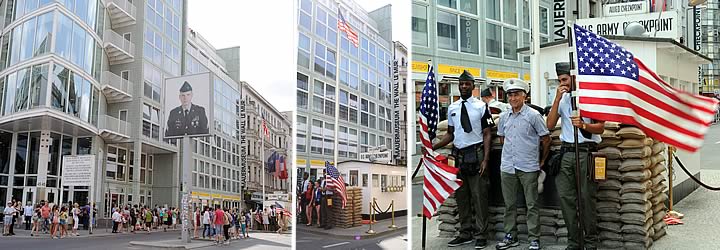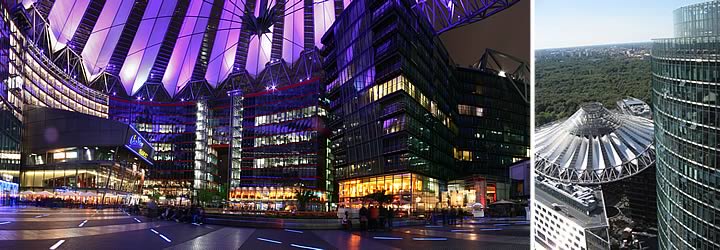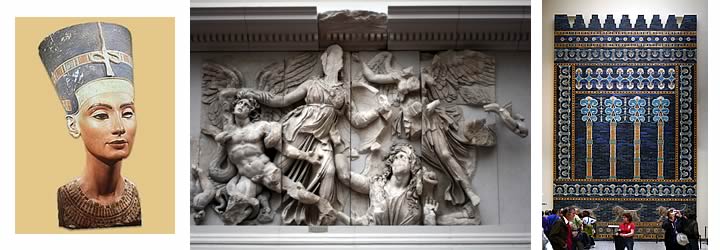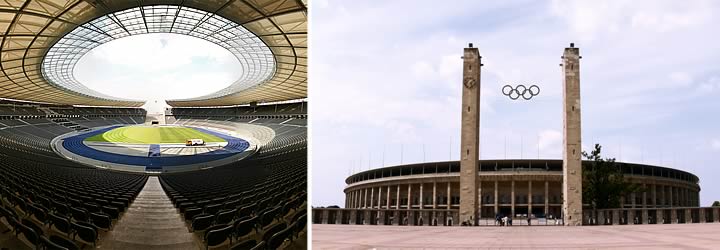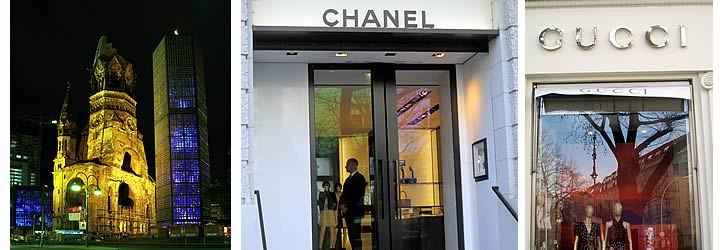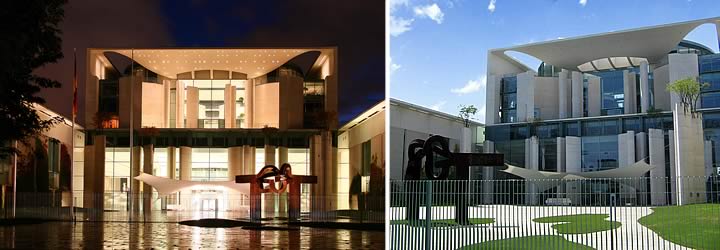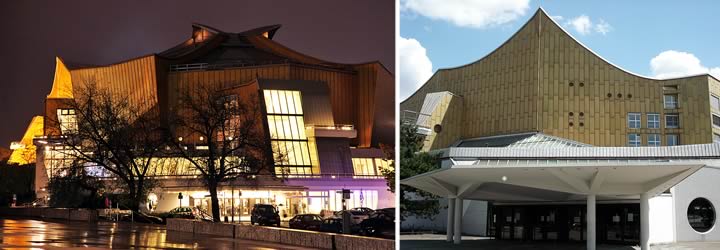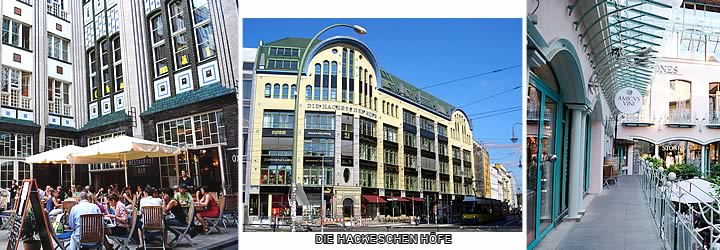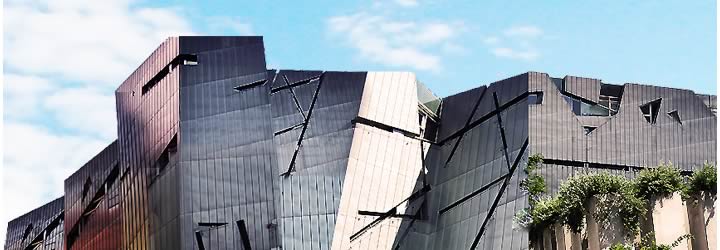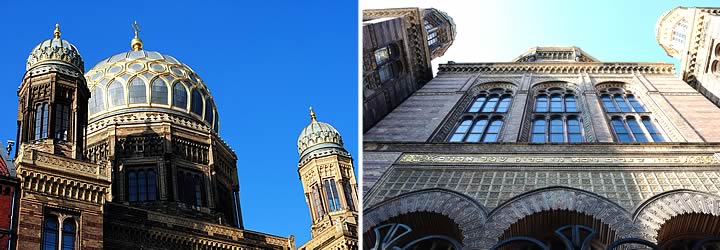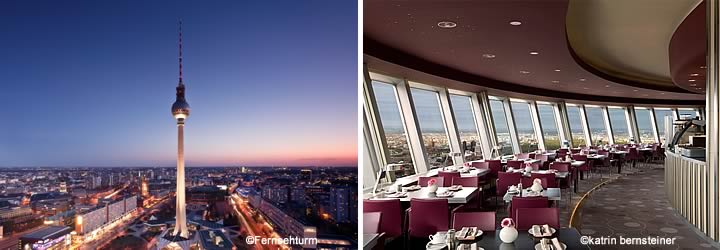Berlin City Tours
Our city tours feature the best sights, the most famous landmarks and iconic attractions of Berlin
BERLIN EVENTS & TOURS offers you a wide range of fascinating sightseeing tours
Discover the extraordinary history and architecture of Berlin, explore the grand art and cultural scene of the German capital.
BERLINDIVIDUAL

PRIVATE BERLIN TOURS on your own terms - Personalized services in Berlin with certified tour guides
Enjoy an upscale atmosphere in one of Europe's most exciting cities. No other city has changed its face so dramatically as Berlin. In the last few years, Berlin's development has been in the overdrive. We'll take you on a trip through space and time. For many people, Berlin is much more than a geographical place, it's a state of mind. We'll show you all of new Berlin without concealing Germany's chequered past and history.
OUR BESPOKE BERLIN CITY TOURS
BERLIN TOP 10: This is our most popular tour. Witness the 10 most important tourist attractions in Berlin.
BERLIN CLASSICS: The regular tour with all the landmark sights, such as the Brandenburg Gate, Gendarmenmarkt, the street Unter den Linden, the Holocaust Memorial, the Emperor-William-Memorial Church, Museum Island with Pergamon Museum, Germany's new Government District with Reichstag (the German parliament) and the New Chancellery, Humboldt University, the War Memorial (Neue Wache), Charlottenburg Palace, Potsdamer Platz.
HIGHLIGHTS OF BERLIN: If you have little time, this is the right tour that focuses on the distinctive Berlin mix of old and authentic monuments along with new and modern landmarks. Explore the highlights of Berlin with our certified tour guides who show you the best destinations and events.
SNAPSHOTS OF BERLIN: If you have no time, we’ll take you on a spin through Berlin to the must-see sights of the city.
SURPRISE TOUR - BERLIN’S MOST UNDERRATED SIGHTS:
Most visitors usually flock to a handful of overcrowded high-profile Berlin attractions, but there are many historical and cultural hotspots beyond the tourist radar which have so much to offer.
For those who want to venture off the beaten track, this is your tour which features Berlin’s hidden gems and little-known destinations - many adventurous options to see and experience.
BERLINDIVIDUAL: This is our most flexible tour which lets you visit Berlin’s finest sights with ease. We'll help you to compose your own tour according to your interests and preferences.
BERLINSPIRATION: Our signature tour - culture, museums, galleries, art, photography, design, fashion, lifestyle, you name it.
Today, Berlin is a hotspot for creative people from all around the world who seek to achieve their dream of success in the dynamic city. Delve into the vibrant art and cultural scene of Berlin. We are aware that interests, needs and expectations of travelers vary immensely and influence their preferences, therefore, the principle of one-size-fits-all is not suitable for cultural and lifestyle tourism. We offer customized and inspiring tours, our guides are professional art historians, art critics, experts, writers and curators who take you to hidden cultural treasures beyond the tourist trail.
Our specialist-led art tours give you fascinating insights and exclusive access to Berlin's prime cultural sites.
BERLINCREDIBLE: THE UNIQUE BERLIN blend of classical and contemporary landmarks:
Brandenburg Gate, Pariser Platz and the site of the new U.S. Embassy,
Gendarmenmarkt: The French influence in Berlin, German Cathedral, French Cathedral, Concert House and Friedrichstrasse, the high-end shopping street with Galeries Lafayette and other brand names, Museum Island with Pergamon Museum, Old Museum, New Museum (see Nefertiti), Old National Gallery, Bode Museum, Germany’s new Government District with the Reichstag (the German parliament), the New Chancellery and Bellevue Palace.
GERMANY´S CHEQUERED PAST:
• Stand over Hitler's bunker
• The downfall of Goebbels and his family
• Holocaust Memorial: The Memorial to the Murdered Jews of Europe
• Exhibition "Topography of Terror" - visit the remains of the SS and Gestapo Headquarters: the epicenter of evil where the Nazis planned the stalags (prisoner-of-war camps) and the holocaust, see the Nazi torture chambers
• Bebelplatz – scene of the Nazi book burning
• Göring's Ministry of the German Air Force
• Sachsenhausen Concentration Camp
• The Berlin Wall and former „deathstrip“
• Checkpoint Charlie: the former crossing point between West and East Berlin was the scene of a defining moment in postwar history, it is here where the Cold War came to a head with American and Soviet tanks facing each other in 1961. Until today, this standoff was the last direct confrontation between the two superpowers which never fought a full-scale war against each other but several proxy battles all over the world during the Cold War.
BERLIN TOP 10 - Our most popular tour. The 10 most important tourist attractions in Berlin
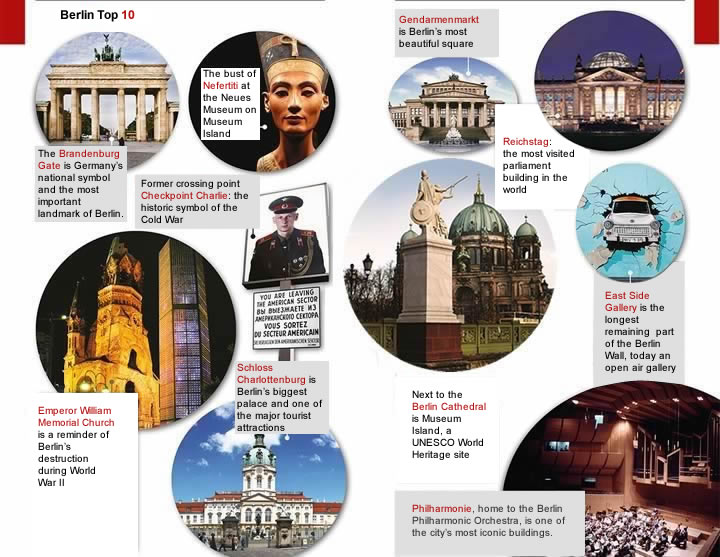
THIS IS OUR BERLIN - LET´S SHARE IT WITH YOU





